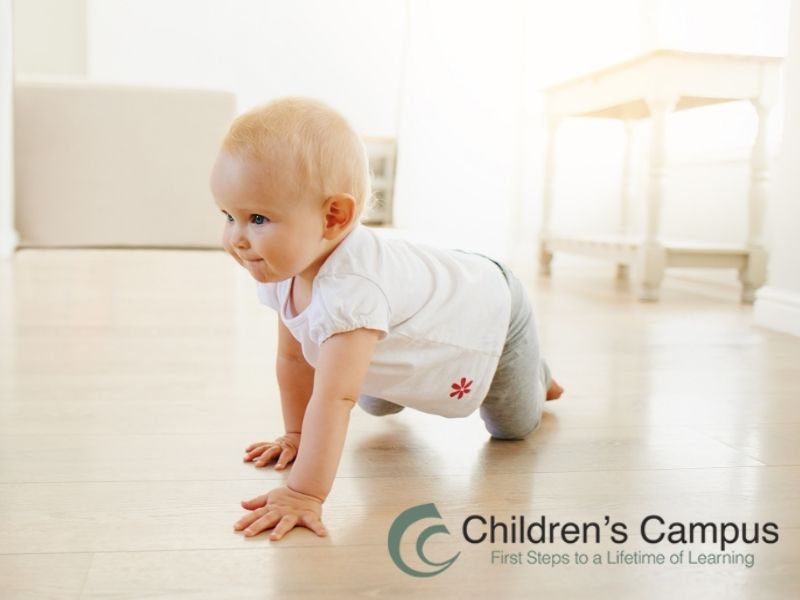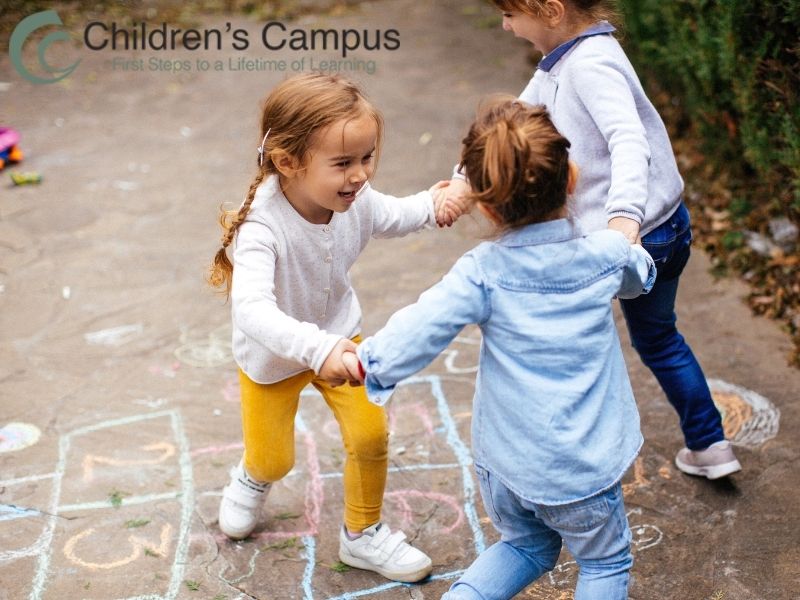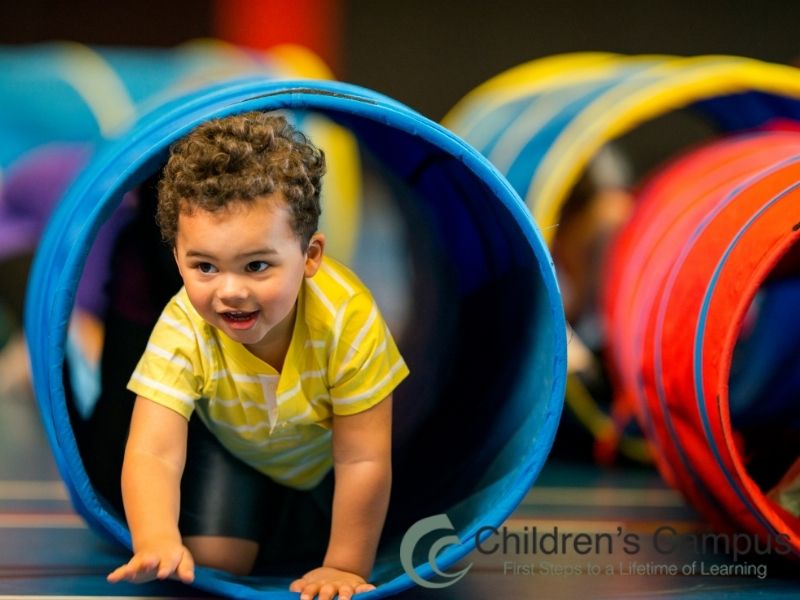NAEYC Accredited, 5-Star Preschool in Greenville, NC.
Contact Us To Schedule A Tour Call: (252) 756-8200Between the ages of two and three, children experience major leaps in their gross motor development. They learn to run, jump, climb, and balance as they explore the world around them.
At Children’s Campus of Greenville, our 5-star preschool recognizes the importance of active play and a movement-rich environment for toddlers. Join us as we explore ways to help children develop their gross motor skills so they can grow, move, and thrive.

Gross motor skills are the abilities that involve large muscle groups used for whole-body movement. These skills allow toddlers to perform everyday physical activities like walking, running, jumping, climbing, and throwing. They also include coordination tasks such as balancing on one foot or navigating stairs.
Gross motor skills involve the use of large muscle groups to perform whole-body movements, whereas fine motor skills focus on smaller muscle groups—especially in the hands and fingers. Fine motor skills are used for tasks like grasping crayons, buttoning clothes, or stacking blocks. Both skill sets are essential for a toddler’s overall development and often build on one another.
Gross motor development plays a vital role in a toddler’s overall growth and long-term well-being. Developing gross motor skills is essential for physical strength and control but also for building independence. They set the stage for more complex skills like playing sports or participating in group games as children grow.
Here’s why gross motor skills are so important during the early years of a child’s life.

Gross motor activities help children strengthen their core muscles, improve posture, and develop balance. These skills support everyday tasks like walking, climbing, and later, more advanced movements like riding a bike or participating in sports.
Strong gross motor skills create the stability children need to refine smaller movements. For example, being able to sit upright and control their trunk allows toddlers to better use their hands for coloring, feeding themselves, or building with blocks.
Many gross motor activities—like running, playing ball, or dancing—are done in group settings. These shared experiences help children learn teamwork, take turns, and develop communication skills.
Movement is closely linked to cognitive development. Activities like crawling through tunnels or navigating obstacle courses challenge children to think, problem-solve, and make decisions as they move their bodies.
As toddlers master new physical skills, they become more independent and willing to try new things. This sense of accomplishment boosts their confidence and encourages ongoing learning.
Between the ages of 2 and 3, toddlers make significant progress in gross motor development. While every child develops at their own pace, there are general milestones that most children reach during this time.

Two year olds begin to move more purposefully and with increased balance and coordination. While still working on stability, they become more curious and bold in their physical activities.
Here are the expected movements for toddlers around the two-year mark:
Three year olds typically become more stable on their feet and can handle more complex movements. This is when coordination begins to noticeably improve.
Look for the following types of movements around the age of three:
It’s important to remember that not all toddlers develop at exactly the same pace. Some children may master certain skills earlier or later than others. What’s most important is steady progress and interest in movement. Environments that encourage active play, like Children’s Campus of Greenville, can help foster healthy physical growth during these formative years.
Toddlers need plenty of opportunities to move, explore, and challenge their growing bodies. Simple, everyday activities can go a long way in helping pre-k aged children develop strong gross motor skills.

Outdoor environments provide the perfect setting for toddlers to stretch their legs and build muscle.
Try these outdoor activities to encourage movement for your toddler:
When weather keeps you inside, there are still plenty of ways to encourage active movement.
Encourage gross motor skill development with these activities:
Even everyday tasks can support gross motor development, including:
At Children’s Campus of Greenville, our preschool programs include many of these gross motor activities for both indoor and outdoor play. By combining structured movement with free play, we give toddlers the tools they need to grow strong, stay active, and enjoy physical learning.

While toddlers develop gross motor skills at their own pace, there are certain signs that may indicate a delay in physical development including:
If you notice any of these signs, start by discussing them with your child’s pediatrician. Early intervention services can provide evaluations and support to help children meet important milestones.
At Children’s Campus of Greenville, we understand that gross motor skills are more than just movement—they’re essential building blocks for learning, confidence, and independence. If you’re looking for a nurturing place that supports your child’s physical and developmental growth, we invite you to explore our programs and schedule a visit today.
To learn more or discuss our preschool enrollment opportunities, contact us at 252-756-8200 or fill out our online contact form to get started.
"*" indicates required fields